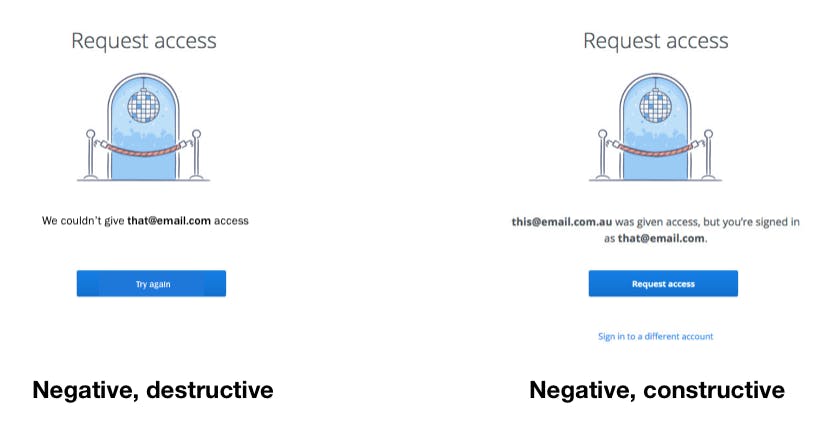The Communication Book uses a combination of diagrams and explanation to effectively articulate various communication theories. With clever visuals and clear, succinct copy explaining them, they’re a breeze to take in. Explaining with just visuals or just copy would make each theory much harder to understand.
This works in exactly the same way for any products you design. Just look below at AirBnB without the microcopy:

The right combination of words and visuals is the key to communicating with your users and helping them achieve their goals. So design teams should invest as much time, love and attention to designing the words as they do anything else on the interface.
Here are three communication theories to help with that…
1. Your product communicates whether you like it or not
The theory: Watzlawick’s Axioms
Mikael and Roman state in their book that even if you say nothing, you’re saying something. They explain it in the following way:
A man comes home, sits down, stares into space and is silent. His wife looks at him and asks him how he is. He says nothing — and yet he communicates something. It is immediately clear that something must have happened.
Relationships fail when you don’t communicate. The story above suggests a disconnect between the man and his wife. A lack of considered or designed communication in our products shows how disconnected we are from our users.
Microcopy is how your product communicates. It provides answers, feedback, comfort, guidance, encouragement and more. If we fail to design the words we use, it says we don’t care as much as we should. More than just leaving a bad taste in their mouths, this will prevent your users from achieving what they set out to do. This isn’t about branding; this is usability.
2. Demonstrate value to keep business and user happy
The theory: Principled Negotiation
Principled Negotiation is a theory offered by Roger Fisher and William L. Ury on how to reach an agreement. They say you should focus on similarities, not differences, when negotiating. So you need to figure out where you and the other party share some common ground and how you can help each other out.
If your product is asking for information, your microcopy needs to communicate the value the user gets in return – “what’s in it for me?”.
The questions you ask your users are blockers to them achieving their goals. So balance your requests with something beneficial wherever possible:
- Give us your email… so we can send over confirmation of your order
- Give us your mobile number… so we can send you a text when the courier’s on their way
Your interface shouldn’t read like a list of demands. Marry business objectives with user benefits in your microcopy and you’ll have a happy business and a happy customer.
With GDPR on the horizon, this is even more important for encouraging users to part with their data or accept your cookies. But well-written microcopy with well-communicated benefits can help you navigate the challenges of GDPR.
3. Always be constructive
The theory: The art of giving feedback
Copywriters have always had ‘Always Be Converting’ running through their brains as they put pen to paper, but writing for products requires another set of ABCs: Always Be Constructive. You need to help the user get to what they want, but what happens when they get it wrong?
According to DL Cooperrider and D. Whitney, giving feedback can be categorised as:
- Negative, destructive (no!)
- Negative, constructive (no, because…)
- Positive, destructive (yes, but…)
- Positive, constructive (yes, and…)
In other words, effective feedback is all about being constructive. And that’s fundamental to microcopy too. Your interface is there to help the user achieve their goal. So when you need to provide feedback, like validation or an error message, this is a really important theory to have in mind.
- Negative, destructive: “You can’t log in.”
- Negative, constructive: “You can’t log in because your password was incorrect. Please try again or recover your password.”
A better example might be to bastardise this fantastic Dropbox message:

Being constructive is being useful. And that should always be your microcopy’s biggest priority.
Understanding communication theories can help you write better copy for your products because the best products are the best communicators. They feel natural and human. And not in an ‘uncanny valley’ way, but in a way that’s genuine and understanding of your needs, fears and motivations.
If you want to learn more about this subject, check out Econsultancy’s copywriting training courses.
Comments